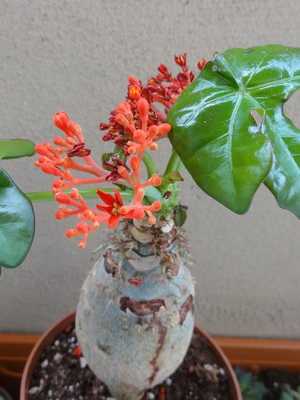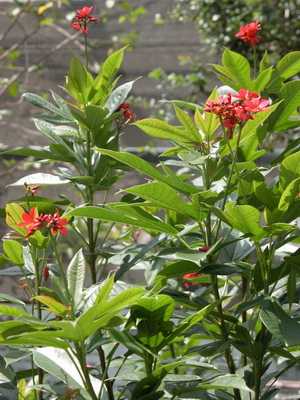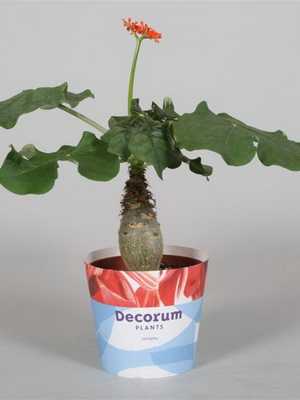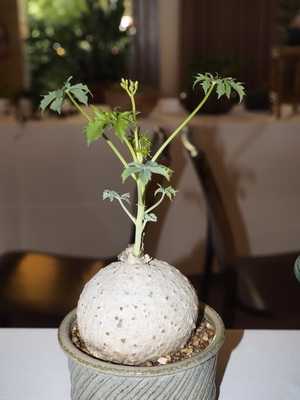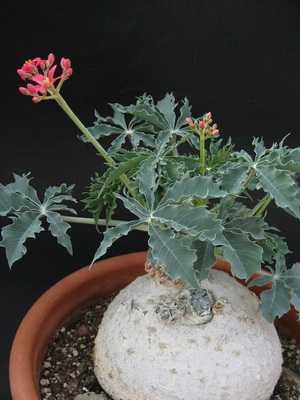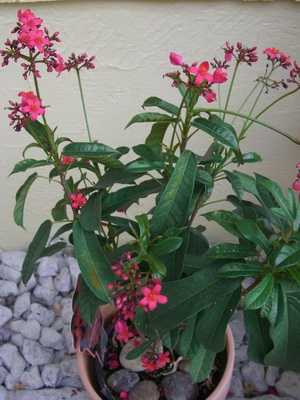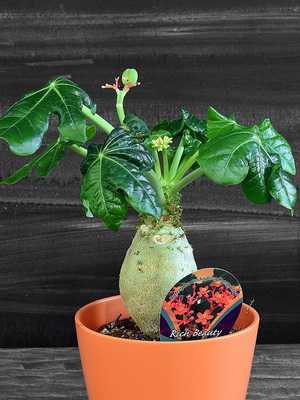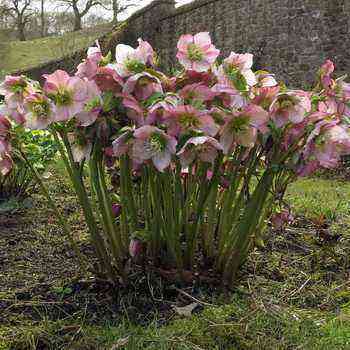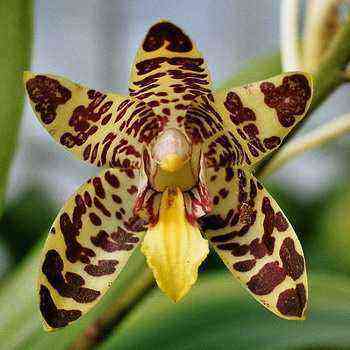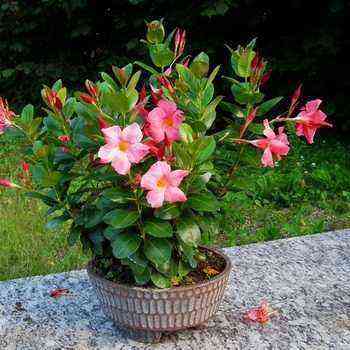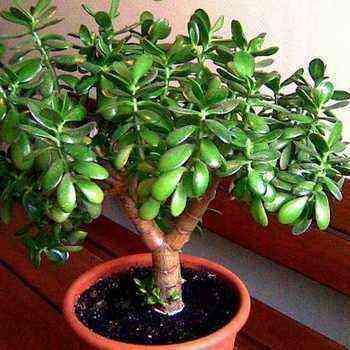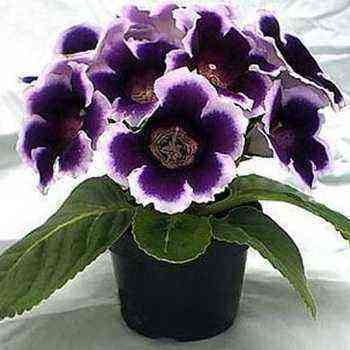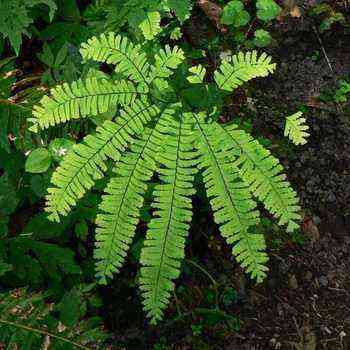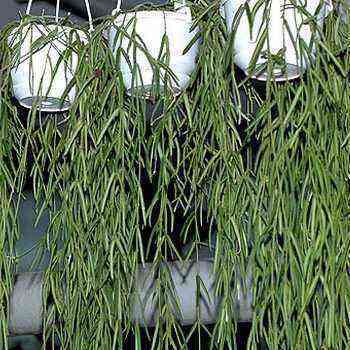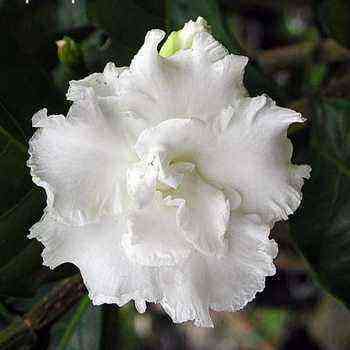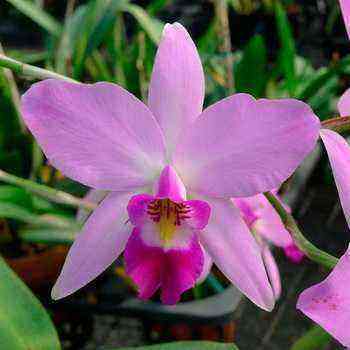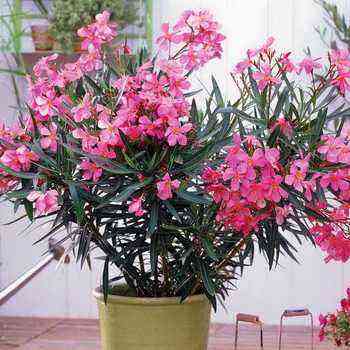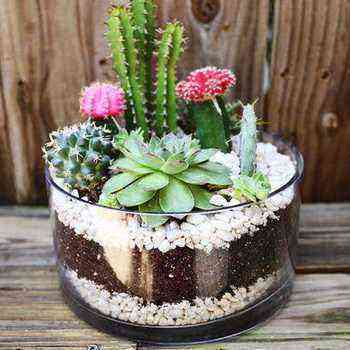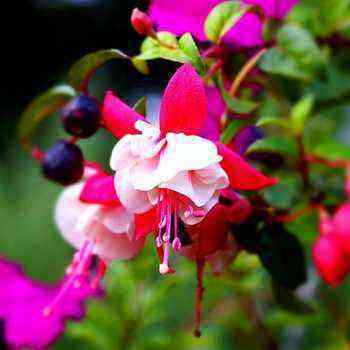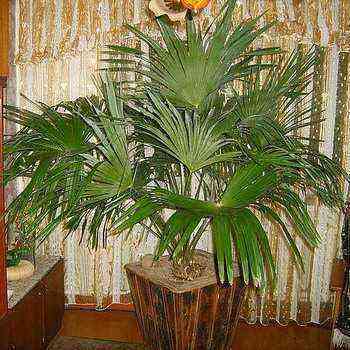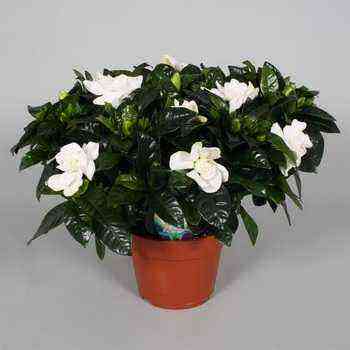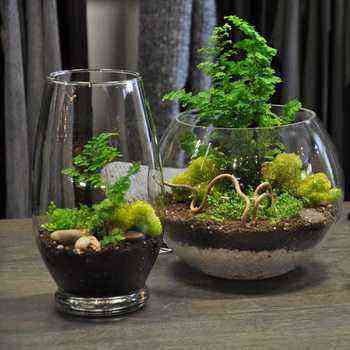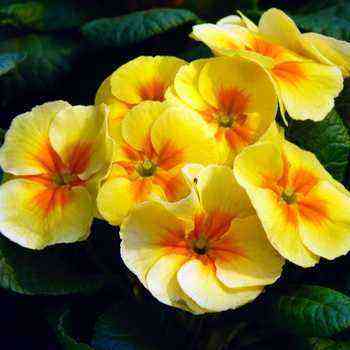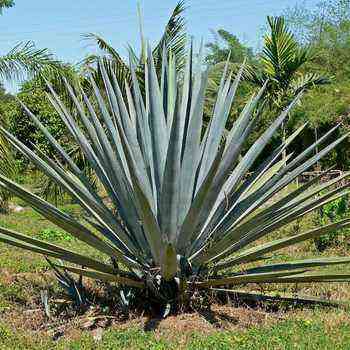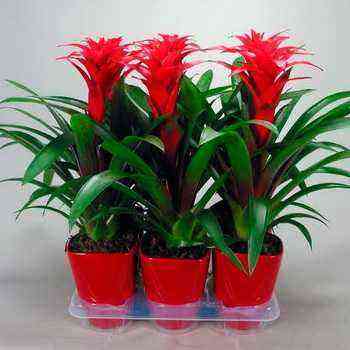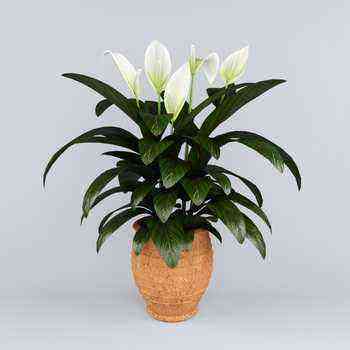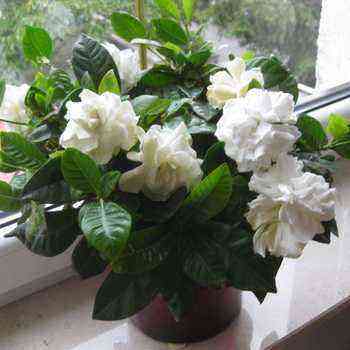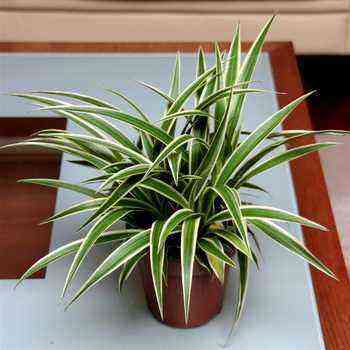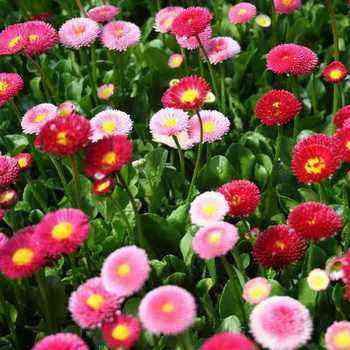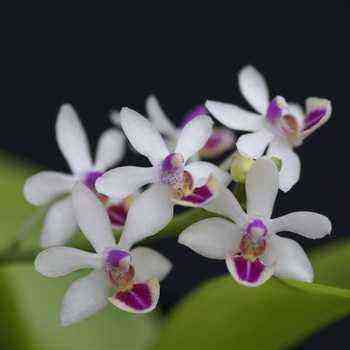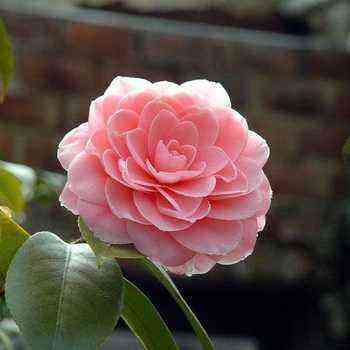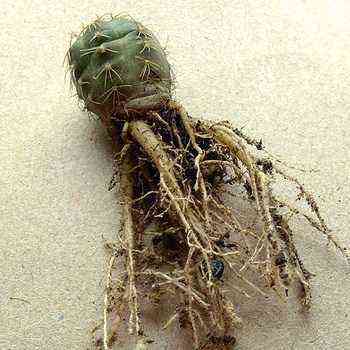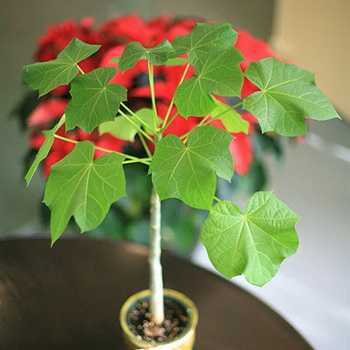
In this photo, the jatropha plant during flowering:
Jatropha gouty and kurkas (with photo)
The genus Jatropha unites more than 175 species, but in indoor culture the plant is represented by only two species. In floriculture, gouty jatropha (jatropha podagrica) is most often used. When describing this succulent, it is worth noting that it develops in the form of a deciduous shrub, reaching a height of up to 70 cm. The plant has a single thickened bottle-shaped trunk.
The thick trunk at the base gradually tapers towards the top, even slight curvatures are possible. The leaves are collected in an interesting way at the top of the plant, but sometimes they can grow in the middle of the trunk. The color of the leaves changes with the age of the plant: initially they are dark green and shiny, but over time they become lighter and lose their luster, acquiring dullness.
Usually, the inflorescences on jatropha podagrica appear before the leaves begin to grow. The umbrella-shaped inflorescence rises above the plant, at first it looks like inconspicuous buds, which gradually develop, and the peduncle lengthens. Reaching its maximum height, the inflorescence acquires a light coral color. Over time, the buds open and turn into beautiful star flowers about 1 cm in diameter. A flowering houseplant gouty jatropha is shown in the photo below:
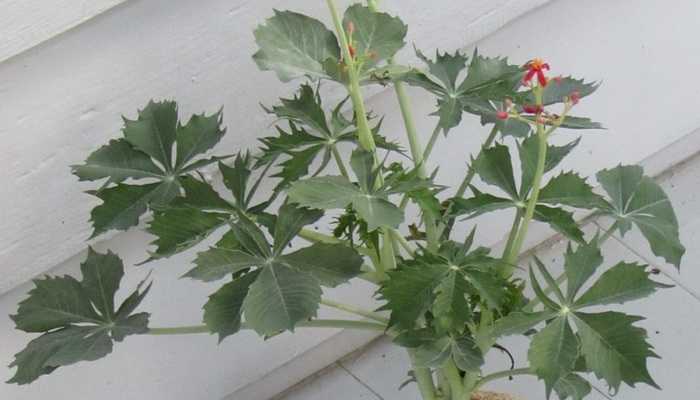
Another common species of this exotic houseplant is the Berlandieri jatropha. This species is distinguished by a thickened trunk, which at its base can reach 20 cm in diameter.
Under natural growing conditions, the thickened trunk is hidden in the soil, but in indoor crops it always rises above the substrate. The Berlandieri jatropha is characterized by long leaf stalks – about 30 cm. They have a dark green color with a gray-silvery shade. The inflorescences of this species of jatropha are too loose, pink or orange-red in color. The jatropha flower propagates by seed in the spring.
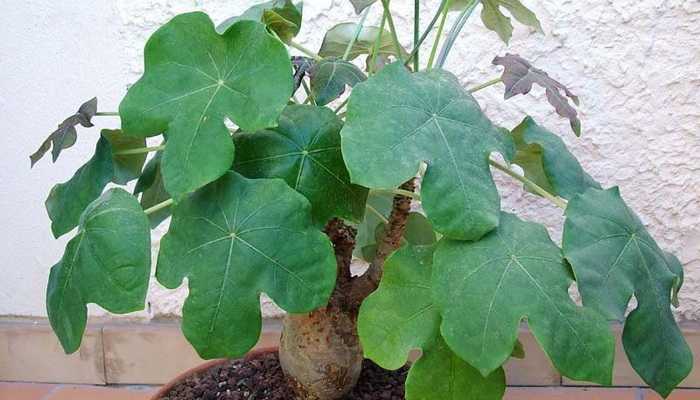
Such a kind of this popular exotic plant, as jatropha kurkas ( jatropha curcas). It is also known under a different name – the Barbados nut.
It is a very powerful shrub with oval leaves with a nice pointed tip. Leaves can have completely different sizes, on one plant they can be from 6 to 40 cm.
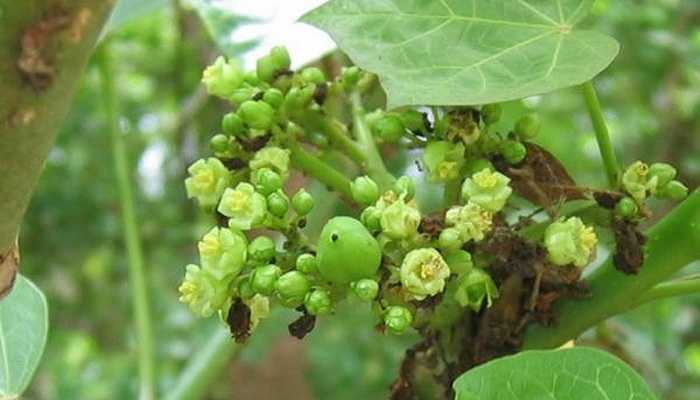
Jatropha curcas has an unusual appearance – the leaves are colored light green, and the flowers are bright yellow. This type of jatropha does not belong to indoor crops, it is not suitable for growing at home.
Such species of this plant as whole-edged jatropha and dissected jatropha are also known.
Caring for jatropha gout and kurkas at home
In care, the jatropha houseplant is completely unpretentious. It prefers to grow in a sunny place at room temperature throughout the year. It tolerates dry indoor air well. The substrate is prepared from turf and leafy soil, humus and sand (1: 1: 1: 0,5). You can use a ready-made cactus substrate.
Despite the fact that this succulent tolerates high temperatures and loves bright light, at first it must be protected from exposure to sunlight, since the leaves can get burned. In cases when there was no sunny weather for a long time or the succulent was just acquired, it must be gradually taught to light and sunlight. True, the gout jatropha, on the contrary, loves direct sunlight, but experienced flower growers recommend hiding it from the midday sun.
Indoor jatropha is afraid of drafts, so you should never leave it in the room when ventilating it, and even more so to take it out into the fresh air. In summer, when caring for a jatropha flower at home, you should provide it with moderate watering. When the leaves fall off, watering is almost stopped until early spring. Jatropha is fed with fertilizers for cacti. The main advantage of growing jatropha at home is that it easily tolerates dry conditions. A succulent plant does not require high humidity conditions, dry air and occasional watering do not affect the condition and appearance of the green leaves and inflorescences of the succulent. But you still need to monitor the quality of water: as for any indoor plants, it should be well-settled and soft, jatropha should not be watered with cold water.
Jatropha needs feeding and fertilization only during the period of its activity – from March to August, from September there is no longer a need for such care. It is strictly forbidden to feed the plant in winter. For this type of indoor culture, complex fertilizers designed for cacti and other succulents will be the best choice.
What an indoor jatropha flower looks like can be seen in the photo below:
Here indoor culture is presented during flowering and dormancy.
